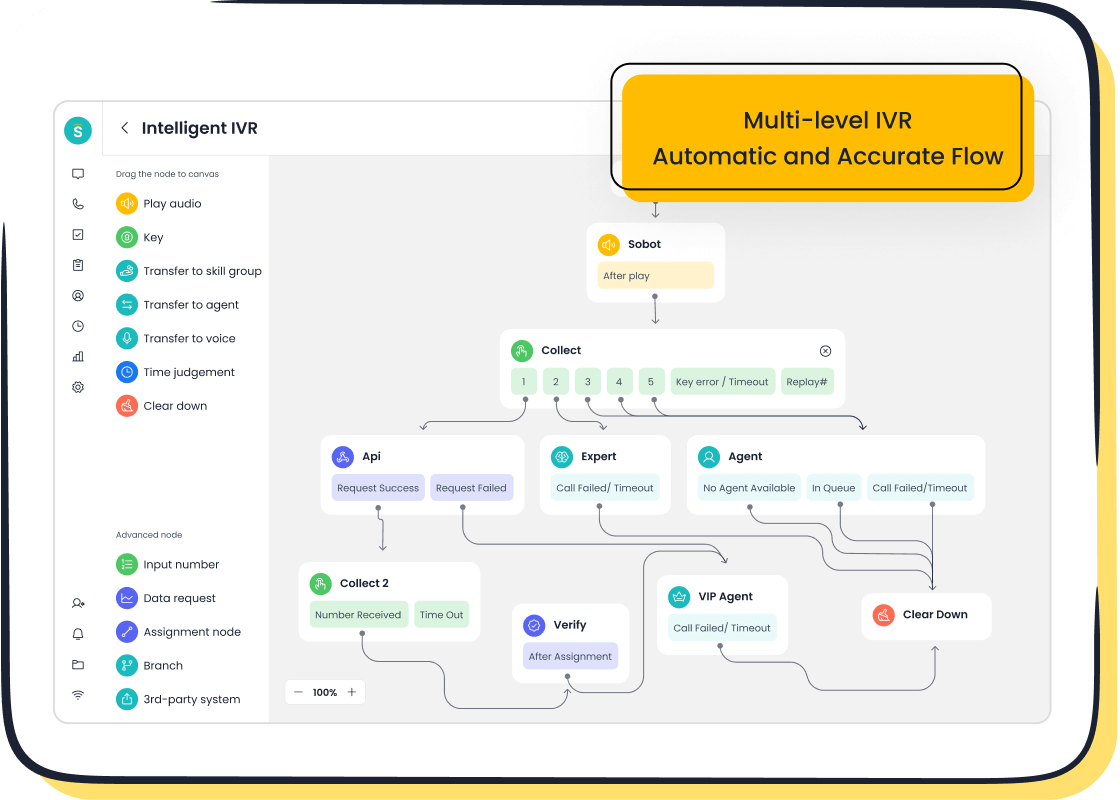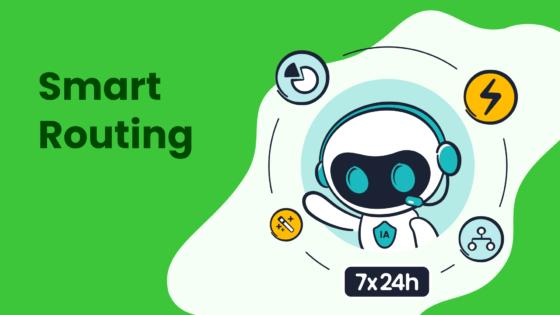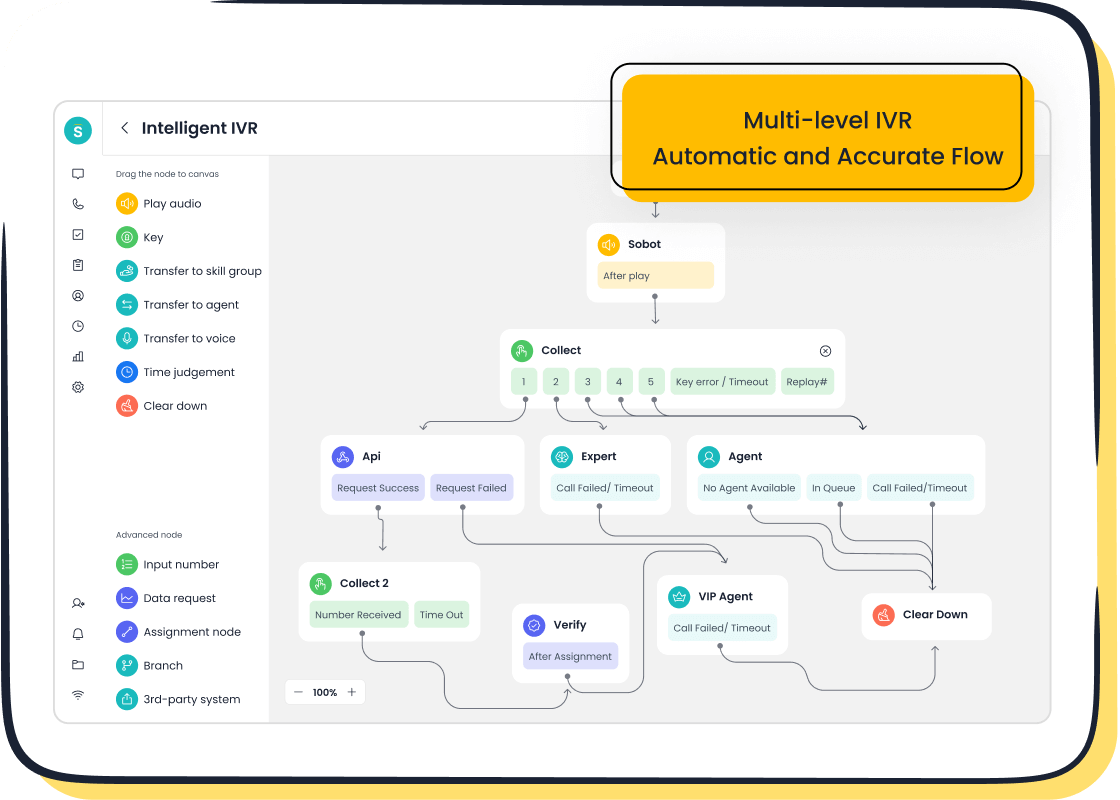What Are Call Center Reports and Why They Matter

Call center reports serve as essential tools for tracking and analyzing call center performance, especially when utilizing Sobot's solutions. These reports help you understand how your contact center operates and identify areas for improvement. For instance, they ensure agents have access to the right data, reducing the 60% of failed First Contact Resolution attempts caused by data gaps. They also provide insights into customer satisfaction, agent productivity, and recurring issues. With 81% of call center leaders investing in analytics, you can use these reports to enhance customer service and make informed strategic decisions that drive better business outcomes with Sobot.
Understanding Call Center Reports

Definition and Purpose
Call center reports are essential tools that consolidate data from various sources to provide a clear picture of your contact center's performance. These reports gather metrics like average wait time, first call resolution, and customer satisfaction into a single dashboard. This allows you to focus on specific areas that need improvement and respond effectively to the dynamic challenges of call center operations.
Tip: Think of call center reporting as a compass guiding your team toward better efficiency and customer satisfaction. Without it, navigating the complexities of daily operations becomes much harder.
By using these reports, you can track agent performance, monitor customer interactions, and identify inefficiencies in workflows. For example, businesses that utilize call center dashboards have reported up to a 30% improvement in operational efficiency. These dashboards integrate real-time data into workflows, enabling better management of call volumes and optimization of agent performance.
Incorporating call center reporting into your strategy ensures you stay proactive rather than reactive. It empowers you to make informed decisions, improve service quality, and enhance customer experiences.
Key Components of Call Center Reports
Call center reports include several critical components that provide a comprehensive view of your operations. Each metric plays a unique role in helping you understand and optimize your contact center's performance. Below is a list of the primary components:
- First Call Resolution Rate
- Customer Satisfaction Score
- Average Handle Time
- Service Level & Response
- Agent Turnover
- Occupancy Rate
- Abandon Rate
- Callers Put on Hold
- Caller's Call Transferred
- Complaint Calls
These metrics allow you to evaluate agent efficiency, customer satisfaction, and overall productivity. For instance, tracking the first call resolution rate helps you measure how often customer issues are resolved during the initial interaction. A high rate indicates effective problem-solving, while a low rate signals the need for additional training or process improvements.
| Metric | Purpose |
|---|---|
| Agent Performance | To evaluate and improve individual agent efficiency |
| Customer Satisfaction | To gauge customer happiness and service quality |
| Operational Efficiency | To assess overall call center productivity |
By analyzing these metrics, you can identify trends, address recurring issues, and implement strategies to enhance your call center's performance. Omnichannel strategies, for example, can boost customer satisfaction by 20-30% by reducing average handling time and improving first-contact resolution rates.
The Role of Call Center Reporting in Customer Service
Call center reporting plays a pivotal role in elevating customer service standards. It transforms raw data into actionable insights, enabling you to deliver personalized and efficient support. For example, visual tools like line graphs can illustrate trends in average wait times, helping you pinpoint areas that need immediate attention.
These reports also help you identify inefficiencies in workflows. For instance, if the data shows a high number of abandoned calls, you can adjust staffing levels or improve call routing to reduce wait times. Real-time analytics further enhance this process by allowing you to make immediate adjustments, ensuring a seamless customer experience.
Note: Businesses that adopt omnichannel strategies often see significant improvements in customer satisfaction. By eliminating repetitive information gathering, you can reduce handling times and resolve issues more effectively.
Moreover, call center reporting supports data-driven decision-making. It provides a detailed analysis of customer interactions, helping you understand their needs and preferences. This insight allows you to tailor your services, fostering stronger relationships and long-term loyalty.
Benefits of Call Center Reports for Businesses
Enhancing Customer Satisfaction
Call center reports play a vital role in improving customer satisfaction. By analyzing key performance indicators like the customer satisfaction score and first call resolution rate, you can identify areas where your contact center excels and where it needs improvement. For example, tracking abandoned calls helps you understand when customers are leaving due to long wait times. Adjusting staffing levels or optimizing call routing can address these issues effectively.
Did you know? Over 50% of customers switch to competitors after a single unsatisfactory experience. Additionally, 73% of customers prioritize customer experience when deciding whether to purchase from a company.

Call center reporting enables you to deliver personalized service by analyzing customer interactions. This data helps you tailor your approach to meet individual needs, fostering loyalty and trust. For instance, Sobot’s Voice/Call Center solution integrates real-time analytics to monitor customer feedback, ensuring your team can respond quickly to concerns.
Improving Operational Efficiency
Call center reports provide actionable insights that help you streamline operations and improve efficiency. Metrics like average handle time and first call resolution offer valuable data on how well your agents perform. Reducing average handle time, for instance, not only enhances customer satisfaction but also optimizes resource utilization.
For example, a contact center that reduced its average handle time from 8 minutes to 5 minutes through better training and technology saw significant improvements in both efficiency and customer satisfaction. Real-time analytics further enhance operational efficiency by allowing you to adjust workflows dynamically based on call volumes.
- Key Metrics for Operational Efficiency:
- Average Handle Time (AHT): Lower AHT indicates faster resolution of customer issues.
- First Call Resolution (FCR): Higher FCR reduces repeat calls and operational costs.
- Cost Per Contact: Helps justify investments in technology and training.

Sobot’s solutions, such as its AI-powered Voicebot, automate repetitive tasks and provide intelligent call routing, ensuring your agents focus on complex issues. This approach boosts productivity and reduces operational costs, making your call center more efficient.
Data-Driven Decision-Making
Call center reports empower you to make data-driven decisions that improve performance and customer satisfaction. By analyzing trends and patterns, you can identify areas for improvement and implement targeted strategies. For instance, speech analytics can reveal common customer concerns, enabling you to address them proactively.
| Use Case | Benefit |
|---|---|
| Speech Analytics | Enhances understanding of customer needs |
| Agent Performance | Improves through actionable insights |
| Operations Optimization | Streamlines processes using real-time data |
AI-enhanced workforce management tools, like those offered by Sobot, analyze real-time data to optimize staffing decisions. This reduces reliance on intuition and minimizes human error. By ensuring your team is adequately staffed during peak hours, you can meet customer demands more effectively.
Call center reporting also supports long-term planning. Tracking call volumes and seasonal trends helps you allocate resources efficiently, ensuring your contact center remains agile and responsive. With Sobot’s monitoring and analysis features, you gain deeper insights into customer interactions, enabling smarter decisions that drive better outcomes.
Identifying Trends and Patterns
Call center reports help you uncover trends and patterns that shape your contact center's operations. By analyzing data, you can identify recurring issues, predict customer behavior, and optimize your strategies for better outcomes. These insights allow you to stay ahead of challenges and improve customer satisfaction.
How Trends and Patterns Impact Your Call Center
Recognizing trends in your call center helps you understand customer needs and preferences. For example, if you notice a spike in calls during specific hours, you can adjust staffing levels to reduce wait times. Patterns in customer complaints reveal areas where your service needs improvement.
Tip: Use call center reporting to track seasonal trends. This helps you prepare for peak periods and ensures your team can handle increased call volumes effectively.
Analyzing patterns also improves agent performance. If data shows that certain agents excel at resolving complex issues, you can assign them to handle similar cases. This boosts efficiency and ensures customers receive the best possible support.
Tools for Identifying Trends
Call center analytics tools simplify the process of identifying trends. These tools provide actionable insights by organizing data into visual formats like graphs and charts. For example, a line graph showing average handle time over months highlights whether your team is improving or needs additional training.
| Tool | Benefit |
|---|---|
| Real-Time Analytics | Helps you respond to issues immediately |
| Historical Reports | Reveals long-term trends and patterns |
| Speech Analytics | Identifies common customer concerns |

Sobot’s Voice/Call Center solution offers advanced analytics features that track customer interactions and agent performance. These tools help you make data-driven decisions that enhance your contact center's efficiency.
Benefits of Identifying Trends
Understanding trends in your call center provides several benefits. You can improve first call resolution rates by addressing recurring issues proactively. This reduces repeat calls and enhances customer satisfaction. Predicting call volumes helps you allocate resources effectively, ensuring your team remains agile during peak hours.
Did you know? Businesses that use call center analytics to identify trends see a 20% improvement in operational efficiency.
By leveraging call center reporting, you gain actionable insights that drive better performance. These insights help you tailor your strategies to meet customer needs, fostering loyalty and trust.
Types of Call Center Reports

Real-Time Reports
Real-time reports provide immediate insights into your call center's operations. These reports allow you to monitor ongoing activities, such as call volumes, agent availability, and customer wait times. By using real-time dashboards, you can identify and address issues as they arise, ensuring smooth operations and improved customer satisfaction.
For example, if a customer's voice tightens during a billing discussion, advanced voice analytics can flag frustration. This enables agents to adjust their approach mid-call, improving the customer experience.
Real-time reporting tools also help reduce average handle time by up to 40%, easing agents' workloads by 90%. Features like voice analytics and performance management tools enable you to track key performance indicators (KPIs) and visualize trends instantly. This makes real-time reports essential for maintaining high service levels in your contact center.
Historical Reports
Historical reports analyze past data to uncover trends and patterns in your call center's performance. These reports help you evaluate metrics like customer satisfaction, average handle time, and first call resolution over time. By studying historical data, you can identify recurring issues and implement strategies to improve future performance.
| Evidence Description | Key Insights |
|---|---|
| Call Center Metrics play a pivotal role in understanding the performance of customer service teams. | Metrics are essential for tracking performance over time. |
| Systematic data collection and analysis help identify trends and improve performance. | Data-driven approaches lead to better decision-making. |
| Evaluation forms facilitate a systematic approach to monitoring performance trends. | They help assess calls and identify areas for improvement. |
Historical reports also support long-term planning. For instance, tracking seasonal call volumes helps you allocate resources effectively during peak periods. This ensures your contact center remains agile and responsive to customer needs.
Agent Performance Reports
Agent performance reports focus on evaluating individual and team productivity. These reports highlight agent performance metrics such as customer satisfaction scores, average handle time, and first contact resolution rates. By analyzing these metrics, you can identify top-performing agents and areas where additional training is needed.
- Common metrics in agent performance reports include:
- Customer satisfaction score (CSAT)
- First reply time (FRT)
- Average handle time (AHT)
- First contact resolution (FCR)
- Escalation rate
- Agent utilization rate
These reports also help you track adherence to schedules and scripts, ensuring consistency in service delivery. For example, monitoring the escalation rate can reveal whether agents need better tools or training to handle complex issues. By leveraging agent performance reports, you can foster a culture of continuous improvement in your call center.
Customer Feedback Reports
Customer feedback reports provide valuable insights into how customers perceive your call center's services. These reports analyze feedback collected through surveys, reviews, and direct interactions, helping you understand customer needs and expectations. By using this data, you can identify areas for improvement and enhance the overall customer experience.
Customers feel valued when asked for feedback. This strengthens their connection to your brand and builds trust.
Feedback reports play a crucial role in improving your contact center's performance. They highlight recurring issues, allowing you to address them proactively. For example, if customers frequently mention long wait times, you can adjust staffing levels or optimize call routing to reduce delays. These reports also help segment customers based on satisfaction scores, enabling you to tailor services to meet their specific needs.
| Evidence Description | Key Insight |
|---|---|
| Customer satisfaction surveys gauge customer needs and expectations. | They help identify problems with products/services and segment customers based on satisfaction scores. |
| 60% of consumers would buy more if treated better. | Understanding valued interactions can lead to increased sales. |
| High satisfaction levels predict retention and repurchase. | Data helps recreate pleasurable experiences for loyal customers. |
Using customer feedback reports, you can recreate positive experiences for loyal customers. High satisfaction levels often lead to retention and repurchase, making these reports essential for long-term growth. Additionally, feedback analytics reveal patterns in customer behavior, helping you refine your strategies and improve service quality.
Real-time dashboards enhance the value of feedback reports by providing immediate insights into customer sentiment. These tools allow you to monitor feedback trends as they happen, ensuring your team can respond quickly to concerns. By leveraging analytics, you can transform raw data into actionable strategies that drive better outcomes for your call center.
Customer feedback reports are one of the most important types of call center reports. They empower you to deliver personalized service, foster loyalty, and improve operational efficiency. Incorporating these reports into your contact center strategy ensures you stay ahead of customer expectations and maintain a competitive edge.
Leveraging Call Center Analytics with Sobot Voice/Call Center
Monitoring and Analysis Features
Sobot Voice/Call Center equips you with powerful monitoring and analysis tools to optimize your contact center operations. These features allow you to track key metrics and gain actionable insights into your call center's performance. For example, the platform offers recording and transcripting, which captures voice calls and converts them into text. This feature helps you analyze conversations for quality assurance and training purposes. Additionally, data analytics provides detailed performance metrics, enabling you to evaluate agent productivity and customer satisfaction effectively.

| Feature | Description |
|---|---|
| Recording & Transcripting | Captures and converts voice calls into text for analysis. |
| Data Analytics | Offers insights and metrics for performance evaluation. |
These tools empower you to make informed decisions and address inefficiencies in real time. By leveraging call center analytics, you can enhance customer experiences and improve operational efficiency.
Intelligent IVR and Smart Call Routing
Sobot's intelligent IVR and smart call routing features streamline your contact center operations by automating call management. The IVR system allows you to customize greetings, build menus, and route calls to the appropriate agents or teams. Smart call routing ensures that customers connect with the right agent quickly, reducing wait times and improving satisfaction.
| Benefit | Description |
|---|---|
| Improved Customer Satisfaction | Reduces wait times and connects customers to the right agent quickly, enhancing their experience. |
| Reduced Wait Times | Quickly directs calls to available agents, minimizing customer frustration and improving service. |
| Increased Agent Productivity | Automates routing, allowing agents to focus on resolving issues rather than managing calls. |
For instance, if a customer calls with a billing issue, the system can route them directly to a billing specialist. This targeted approach not only saves time but also ensures a higher first-call resolution rate. By integrating these features, Sobot helps you deliver seamless and efficient service.
Unified Workspace for Agents
Sobot Voice/Call Center provides a unified workspace that consolidates all essential tools and information into a single interface. This workspace allows agents to manage calls, access customer data, and track performance metrics without switching between systems. The streamlined interface improves agent productivity and reduces errors.
Imagine an agent handling a customer inquiry. With Sobot's unified workspace, they can view the customer's history, previous interactions, and current issue in one place. This comprehensive view enables agents to provide personalized and efficient support. The workspace also integrates with CRM systems, ensuring that all customer data remains up-to-date and accessible.
By simplifying workflows and enhancing data accessibility, Sobot's unified workspace empowers your agents to focus on delivering exceptional service. This feature plays a crucial role in improving both agent satisfaction and customer loyalty.
AI-Powered Voicebot for Enhanced Insights
AI-powered voicebots revolutionize how your call center operates by providing actionable insights and streamlining customer interactions. These intelligent systems analyze conversations, predict customer needs, and deliver consistent responses, ensuring your contact center remains efficient and customer-focused.
Voicebots handle routine inquiries, freeing agents to focus on complex tasks. For example, they can answer FAQs instantly, reducing wait times and improving customer satisfaction. Companies using AI solutions report a 30% improvement in satisfaction rates, demonstrating the transformative impact of automation. Additionally, voicebots optimize workforce shifts by predicting call volumes, helping you reduce unnecessary expenses.
Tip: Use AI-powered voicebots to monitor call quality. Conversational analytics reveal dissatisfaction indicators, enabling proactive problem-solving.
These systems also enhance call center analytics by identifying patterns and improvement opportunities. AI learns from interactions, providing valuable insights that help you refine your strategies. For instance, automatic summaries allow agents to switch between calls quickly, reducing resolution times and boosting productivity.
| Benefit | Description |
|---|---|
| Efficiency | AI bots handle FAQs and straightforward requests, allowing agents to focus on complex tasks. |
| Cost Reduction | Optimizes workforce shifts based on volume predictions, reducing unnecessary expenses. |
| Customer Satisfaction | Companies report a 30% improvement in customer satisfaction after implementing AI solutions. |
| Quicker Resolution Times | AI provides automatic summaries, enabling agents to switch quickly between calls. |
| Consistent Responses | AI systems deliver uniform service without fatigue or mood changes. |
| Reduced Wait Times | Immediate automated answers for basic questions lead to shorter wait times for customers. |
| Enhanced Call Quality | Conversational analytics monitor call quality, revealing patterns and dissatisfaction indicators. |
| Proactive Problem Solving | AI personalizes experiences by accessing customer data, anticipating needs, and addressing issues. |
| Valuable Insights | AI learns from interactions, identifying patterns and improvement opportunities for services. |
Voicebots also improve conversion rates. According to Salesforce, 63% of businesses using conversational AI saw a 25% increase in conversions. Quick interactions foster loyalty, while operational efficiency reduces the need for large support teams. This allows agents to focus on delivering personalized service.
Sobot’s AI-powered Voicebot integrates seamlessly into your contact center, offering features like intent recognition and conversational analytics. These tools empower your team to deliver exceptional service while uncovering insights that drive better outcomes. By leveraging AI, you can transform your call center into a hub of efficiency and customer satisfaction.
Why Call Center Reports Are Essential for Business Success
Supporting Customer-Centric Strategies
Call center reports are vital for building customer-centric strategies. They help you understand customer needs by monitoring key metrics like First Call Resolution Rate, Average Call Duration, and Net Promoter Score. These metrics reveal how well your contact center meets customer expectations. For example, analyzing the First Call Resolution Rate shows whether your team resolves issues during the first interaction. A high rate indicates effective service, while a low rate highlights areas needing improvement.
By identifying performance deviations, you can implement targeted changes to enhance customer satisfaction. For instance, if reports show long call durations, you can provide agents with better tools or training to resolve issues faster. This proactive approach ensures your contact center consistently delivers high-quality service.
Tip: Use call center reports to personalize customer interactions. Tailored support fosters loyalty and strengthens relationships.
Driving Long-Term Growth
Call center reports play a crucial role in driving sustainable growth. They provide insights into customer behavior, helping you align your services with their preferences. For instance, tracking seasonal trends allows you to prepare for peak periods, ensuring your team handles increased call volumes effectively.
These reports also improve operational efficiency by streamlining processes and optimizing resource allocation. Advanced analytics tools, like those offered by Sobot, automate repetitive tasks, freeing your team to focus on complex issues. This efficiency reduces costs and enhances customer satisfaction, creating a solid foundation for long-term success.
Staying Competitive in the Market
In today’s competitive landscape, robust call center reporting gives you an edge. Real-time insights allow you to ask specific questions from the data, helping you understand customer preferences and behavior. This enables you to tailor your products and services to meet market demands.
Enhanced customer satisfaction through advanced data analysis strengthens your brand’s reputation. Additionally, operational efficiency achieved through automation and analytics ensures your contact center remains agile and responsive. These advantages position your business as a leader in the market.
Did you know? Businesses using call center analytics often see a 20-30% improvement in customer satisfaction and operational efficiency.
Call center reports are essential for improving customer service and operational efficiency. They provide actionable insights into key metrics like First Call Resolution Rate and Customer Satisfaction Score, helping you identify areas for improvement. For example, maintaining a resolution rate above 70% and reducing queue times to under 5.5 seconds can significantly enhance customer experiences.
| Metric | Formula | Benchmark |
|---|---|---|
| First Call Resolution Rate | (Calls resolved in first interaction / Total number of calls) × 100 | Above 70% |
| Call Abandonment Rate | (Incoming calls - Handled calls) / Total incoming calls × 100 | 6.9% - 7.4% |
| Average Time in Queue | Total wait time / Total customers served | 4.3 sec to 5.5 sec |
| Customer Satisfaction Score | (Satisfied customers / Total customers who rated) × 100 | 75% - 85% |
Sobot’s Voice/Call Center solution empowers you to leverage these insights effectively. Features like intelligent IVR, real-time analytics, and AI-powered voicebots streamline operations and improve service quality. By adopting call center reporting, you can achieve continuous improvement through:
- Enhanced processes and customer satisfaction.
- Evidence-based decisions that boost agent performance.
- Quality management tools to address issues and ensure compliance.
Embrace call center analytics to stay competitive, meet customer expectations, and drive long-term success.
FAQ
1. What are the most important metrics in call center reports?
The most critical metrics include First Call Resolution (FCR), Average Handle Time (AHT), Customer Satisfaction Score (CSAT), and Call Abandonment Rate. These metrics help you measure efficiency, customer happiness, and overall performance.
Tip: Focus on improving FCR and CSAT to boost customer loyalty and satisfaction.
2. How often should you review call center reports?
You should review real-time reports daily to address immediate issues. Analyze historical and performance reports weekly or monthly to identify trends and plan long-term strategies.
Note: Regular reviews ensure your team stays proactive and responsive to customer needs.
3. Can call center reports improve agent performance?
Yes, they can. Reports highlight areas where agents excel and where they need improvement. Metrics like Average Handle Time and Escalation Rate provide actionable insights for targeted training and coaching.
- Example: Use agent performance reports to reward top performers and guide underperforming agents.
4. What tools make call center reporting easier?
Tools like Sobot Voice/Call Center simplify reporting with features like real-time analytics, intelligent IVR, and AI-powered voicebots. These tools provide actionable insights and streamline data collection.
| Feature | Benefit |
|---|---|
| Real-Time Analytics | Immediate issue identification |
| AI-Powered Voicebots | Automates repetitive tasks |
5. Why is customer feedback important in call center reports?
Customer feedback reveals how well your service meets expectations. It helps you identify recurring issues and improve processes. Feedback reports also allow you to personalize interactions, fostering trust and loyalty.
Did you know? 60% of customers are more likely to stay loyal when their feedback is valued.
See Also
Essential Strategies for Effective Call Center Quality Management
Best Call Center Analytics Tools to Use in 2024
Enhancing Call Center Efficiency Through Effective Monitoring
Understanding Medical Call Center Services and Their Advantages
